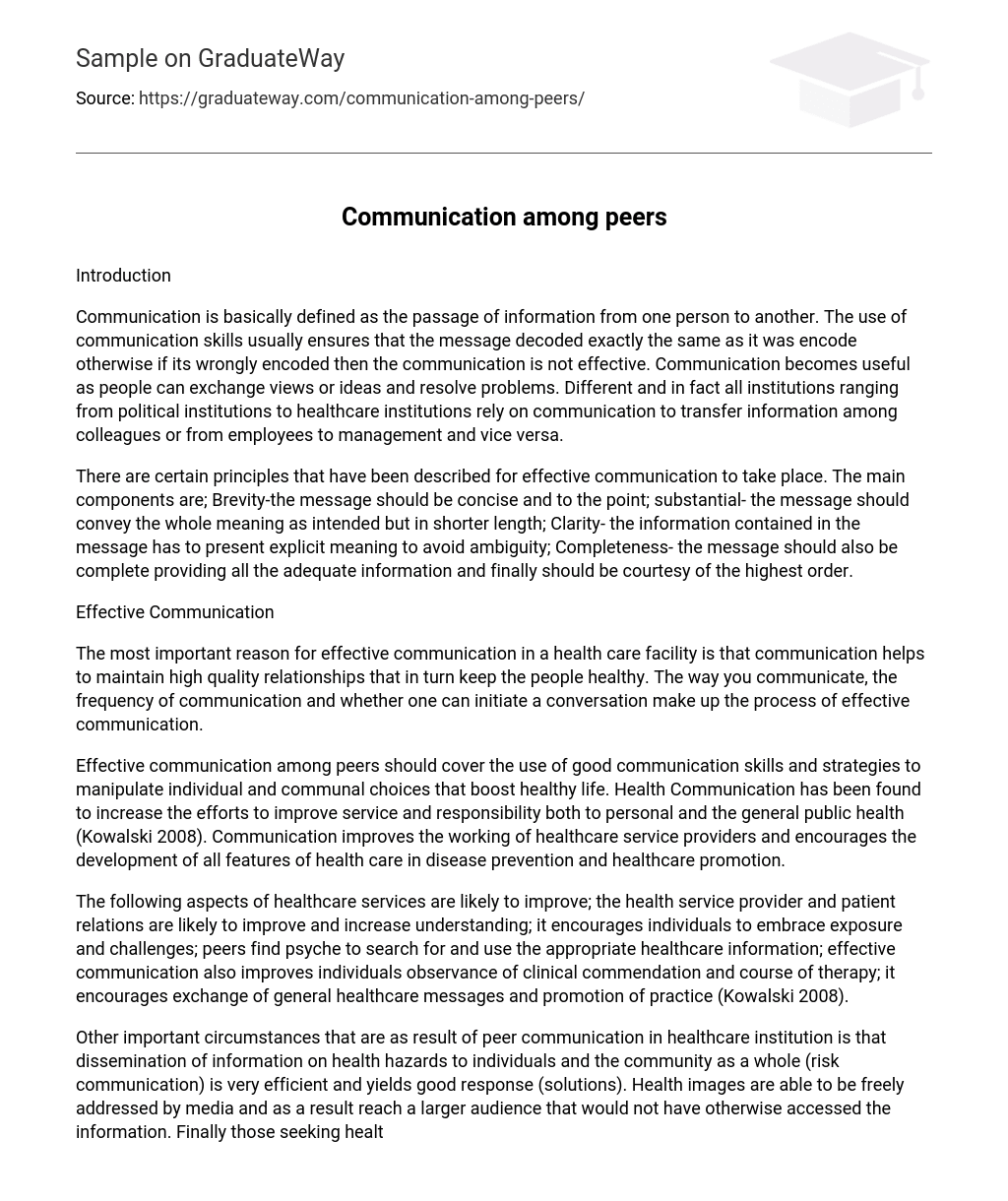Introduction.
Communication is defined as the transmission of information from one person to another. Effective communication skills ensure that the message is decoded accurately. If the message is encoded incorrectly, communication will not be effective. Communication facilitates the exchange of ideas and problem-solving. Institutions, including political and healthcare institutions, rely on communication to transfer information among colleagues or between employees and management.
Effective communication requires adherence to certain principles. These include brevity, which means that the message should be concise and to the point. The message should also be substantial, conveying the intended meaning in a shorter length. Clarity is also important, as the information contained in the message must present explicit meaning to avoid ambiguity. Completeness is another essential component of effective communication; messages should provide all necessary information. Finally, courtesy is of utmost importance.
Effective communication is essential in any situation, whether it’s personal or professional. It involves the exchange of information and ideas between individuals or groups. Good communication skills can help build strong relationships, increase productivity, and prevent misunderstandings.
Effective communication is crucial in a healthcare facility because it helps maintain high-quality relationships, which ultimately contribute to the overall health of individuals. The process of effective communication involves factors such as how one communicates, the frequency of communication, and the ability to initiate conversations.
Effective communication among peers should involve the use of good communication skills and strategies to influence individual and collective decisions that promote a healthy lifestyle. Health Communication has been found to enhance efforts to improve service and responsibility for both personal and public health (Kowalski, 2008). Communication enhances the performance of healthcare service providers and encourages the development of all aspects of healthcare, including disease prevention and healthcare promotion.
The following aspects of healthcare services are likely to improve:
- Health service provider and patient relations, which are likely to improve and increase understanding
- Encouragement for individuals to embrace exposure and challenges
- Peers finding the psyche to search for and use appropriate healthcare information
- Effective communication improving individuals’ observance of clinical commendation and course of therapy
- Encouragement for the exchange of general healthcare messages and promotion of practice (Kowalski, 2008).
Peer communication in healthcare institutions has important consequences, including the efficient dissemination of information on health hazards to individuals and the community as a whole (known as risk communication), which yields good responses and solutions. Health-related messages can be more widely distributed through media channels, thus reaching a larger audience that may not have otherwise accessed the information. Additionally, those seeking healthcare services can learn how to gain access to the institution and benefit from its services (Kowalski 2008).
Communication barriers can hinder effective communication between individuals or groups. These barriers can be physical, such as distance or noise, or psychological, such as cultural differences or language barriers. It is important to identify and address these barriers in order to facilitate clear and productive communication.
Communication barriers in the healthcare scenario can be very hazardous. Any blunder could create a significant problem because the situation in healthcare is closely associated with human life and wellbeing (Sinickas, 2007). Therefore, healthcare communications require utmost care. To address this issue, the healthcare sector has established specialized communication consultants such as Serento Healthcare, Bioquest, and Imprimis Life Therapy.
Communication barriers are obstacles to effective communication that result in partial or incomplete messages being conveyed. There are several types of communication barriers, with noise being the main barrier. Noise can come from many sources, ranging from machines to people (Sinickas 2007).
One type of communication barrier is language. The choice of words when speaking is crucial because wrong interpretation can easily lead to distortion of information and risk the lives of patients.
Another type of barrier is the receiver’s perception, which may be biased. This describes what the receiver perceives the encoder could be saying when they have not understood the message. This can be dangerous and entail projection and self-fulfilling prophecies.
Personal relationships also influence how people perceive information based on past experiences. Miscommunication may sometimes result from cultural differences, which cover differences in talking styles, aspirations, and other basic values (Kowalski 2008).
Conclusion.
Communication must be effective to be useful. To enhance its effectiveness, individuals in all organizations must improve their communication skills and increase the frequency of communication aimed at explicitly addressing issues and providing solutions. The benefits of communication discussed in this text far outweigh the disadvantages; therefore, healthcare institutions should work hard to improve peer communication and interpersonal relationships for efficient healthcare service provision.
References
Kowalski, K. (2008). Tough Questions: Recognize and Resolve Communication Breakdown. The Journal of Continuing Education in Nursing, 39(2), 57-89. Larkspur, Colorado: Kowalski & Associates.
Sinickas, A. (2007). Breaking down departmental barriers: Strategic Communication Management. Highbeam Research, 12(1), 11-50.





